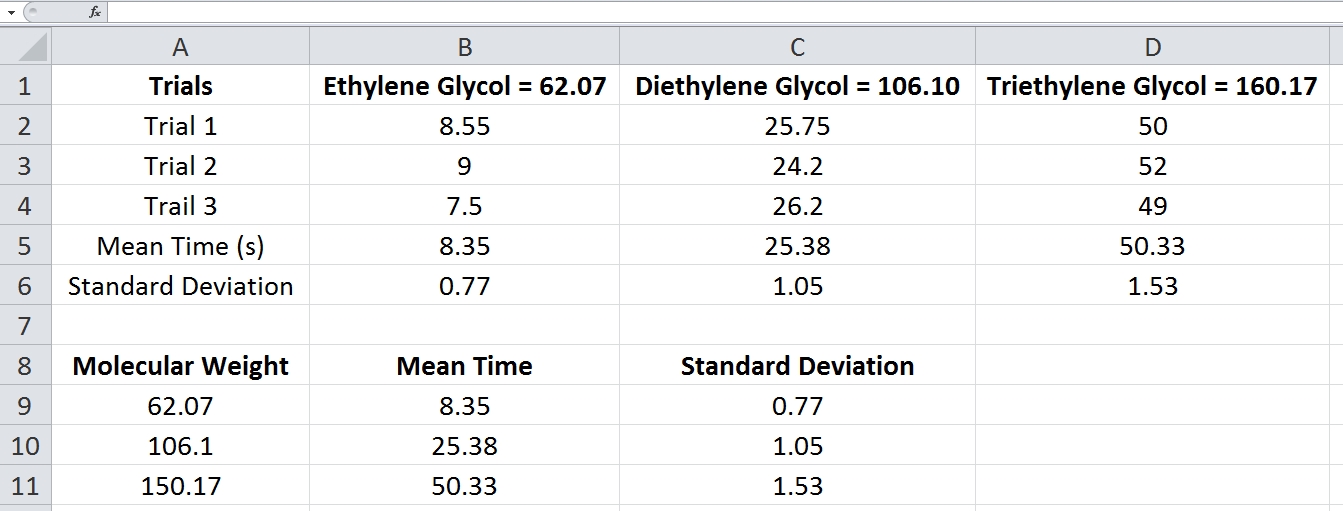Chapter 2. Movement of Materials Across the Cell Membrane II
General Purpose
This lab will present some of the concepts related to the movement of materials across cell membranes and the process of osmosis.
Learning Objectives
General Purpose
- Gain experience presenting the results and conclusions of an experiment to other individuals.
Exercise 1. Determining the Relative Osmotic Concentration of Plant Cells
Before you begin to graph and interpret your data from your investigation from last time, you should answer the following questions:
- What are my hypotheses?
- What predictions did I make?
- What type of graph will I use to present the processed data from our investigation?
In the pre-lab section you were to calculate percent change in mass for the potato tissue soaked in sucrose solutions of varying concentration (M). You are now ready to graph the percent change in mass as a function of the concentration of the incubation solution in Microsoft Excel. Include a best-fit line on your graph. Label axes appropriately and write a figure caption. If you need help, ask your lab instructor for assistance in creating the graph.
Interpreting the Results
Based on the regression line on your graph, at what sucrose concentration is there no change in the weight of the potato tuber disks?
Exercise 2. Determination of Diffusion Rate of Molecules of Varying Size and Polarity Across the Cell Membrane
Using Excel, determine the means and standard deviation or standard error for your treatments. Record the data in your laboratory notebook.
Below is a sample Excel spreadsheet for hemolysis time of red blood cells in glycols. Note that the values in the lower portion of this spreadsheet were generated by typing in the mean hemolysis times and standard deviation values from the upper portion of the spreadsheet. Remember that if you copy and paste from the upper portion of the spreadsheet to the lower portion, be sure to paste values, not formulas. The lower portion of the spreadsheet will be used to create a graph.

Using Excel, create a graph comparing the hemolysis times vs. number of hydroxyl groups or molecular weight for the three propanols or glycols. Include error bars on the graph. If appropriate, add a best-fit line. Label the axes and create a caption for the graph.
Interpreting the Results
Answer the following two questions in your laboratory notebook:
- How do the results compare with your predictions?
- If they are different, what might account for the difference?
Presentations
Each group will give a brief oral presentation to their laboratory section, explaining the results of their experiment and their conclusions about the interpretation of these results. Your group should prepare to answer the following questions by writing your answers in your lab notebook.
- Which of your hypotheses was rejected by your experiment? What criteria did you use to determine which hypothesis was supported by your results?
- Do your results/conclusions agree with the predictions you made originally?
- Do your results/conclusions agree with your basic understanding of how substances and cell membranes interact?
- What were the major strengths of your experiment?
- What were the major weaknesses of your experiment?
- What is the next experiment that you would conduct?
As other groups present the results of their experiments, sketch the pattern of their data and note their conclusions in your lab notebook.
View the following video for information about the communication of the results and discussion portions of an experiment. This may help you understand the structure and importance of these sections and their role in your experiments.
Post-Lab Quiz
Proceed to the Post-Lab Quiz